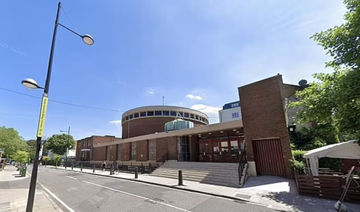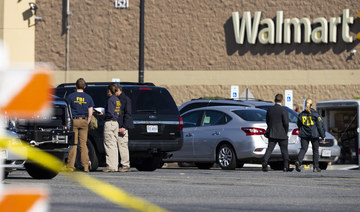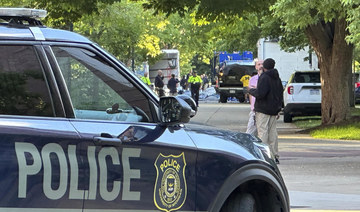NEWPORT NEWS, Virginia: When a 6-year-old shot and wounded his first-grade teacher in this shipbuilding city near Virginia’s coast, the community reacted with collective shock.
But the sentiment has percolated into rage from parents and particularly from teachers, with many lambasting school administrators Tuesday night for what they called a misguided emphasis on attendance and other education statistics over the safety of children and staff.
The anger in Newport News is bubbling up during a decadeslong pendulum swing that’s been moving American schools away from suspensions and expulsions, experts say. But some school systems are still seeking a “happy medium” between strict discipline and a gentler approach.
During a three-hour school board meeting dedicated solely to public comment, Newport News teachers and parents said students who assaulted classmates and staff were routinely allowed to stay in the classroom with few consequences. They said the shooting of Abigail Zwerner could have been prevented if not for a toxic environment in which teachers’ concerns are systemically ignored.
“Every day in every one of our schools, teachers, students and other staff members are being hurt,” high school librarian Nicole Cooke told the board. “Every day, they’re hit. They’re bitten. They’re beaten. And they’re allowed to stay so that our numbers look good.”
Addressing superintendent George Parker, Cooke said: “If Abigail had been respected, she wouldn’t be in the hospital right now.”
Zwerner was shot Jan. 6 as she taught her first-grade class at Richneck Elementary. There was no warning and no struggle before the 6-year-old pointed the gun at his teacher and fired one round, police said.
The bullet pierced Zwerner’s hand and struck her chest. The 25-year-old hustled her students out of the classroom before being rushed to the hospital.
Newport News police said the 6-year-old’s mother legally purchased the gun but that it was unclear how her son gained access to it. A Virginia law prohibits leaving a loaded gun where it is accessible to a child under 14, a misdemeanor crime punishable with a maximum one-year prison sentence and $2,500 fine. No charges have been brought against the mother so far.
Community reaction shifted into anger late last week after the superintendent revealed that Richneck administrators had learned the child may have had a weapon before the shooting. But a search did not find the 9mm handgun despite staff looking through his bag.
Zwerner’s shooting was “completely preventable — if the red flags had been taken seriously and proper procedures clearly communicated and followed,” Amber Thomas, a former school psychologist in Newport News, told the board.
Thomas left the school system last year after working there for a decade. In an interview with The Associated Press, she recalled a time when a “teacher was assaulted by a student — and that student faced no disciplinary action at all.”
“A school counselor and I were often called to intervene with explosive behaviors,” said Thomas, who served three elementary schools at a time, although not Richneck. “And the administrator would see what was going on and turn around and walk the other way.”
Cindy Connell, a middle school teacher who also addressed the board, told the AP that school system leaders fear angering parents and are too focused on limiting discipline such as suspensions.
They’re afraid, she said, that pulling kids out of the classroom will imperil a school’s accreditation.
“Our administrators are under an intense pressure to make everything appear better than it is in reality,” Connell said.
Zwerner’s shooting did not shock Connell.
“I have teacher friends who have been hit by kindergarteners, kicked by kindergarteners, punched by kindergarteners, stabbed with pencils by kindergarteners,” she said. “So the only difference is that this child had access to a weapon at home. So, if you put those two things together, I’m not surprised.”
Michelle Price, a spokeswoman for the school board, did not immediately respond to an email from The Associated Press asking for comment on the various criticisms expressed Tuesday night.
William Koski, a Stanford law professor and director of the school’s Youth and Education Law Project, said many schools in the US had strict zero-tolerance discipline policies in the 1990s, but began to depart from that approach about a decade later, as concerns grew that suspensions and expulsions were failing to help students, while feeding the school-to-prison pipeline and disproportionately affecting Black children.
“If you get expelled a lot, you are just more likely to head down that path, to not graduate, to end up not being a very productive person,” Koski said.
Educators have shifted to a gentler approach that focuses on creating a safe and positive school climate, while zeroing in on the root causes of behavioral problems.
Koski said he understands the frustrations of teachers in Newport News and elsewhere. He said that some school systems may still be in search of a “happy medium” between the two approaches.
But Republicans in Virginia’s House of Delegates appear to want to push the pendulum back. A bill filed last month would require the state Department of Education to establish a uniform discipline system for students. It would include criteria for teachers to remove disruptive students from class, while making removal mandatory if the behavior is violent.
Newport News is a racially diverse city of about 185,000 people — about 45 percent white and 41 percent Black — that sits along the James River near the Chesapeake Bay. It’s probably best known for its sprawling shipyard, which builds the nation’s aircraft carriers and other US Navy vessels.
About 15 percent of the population lives in poverty, according to US Census data. More than 400 of the nearly 1,000 incidents of violent crime in the city in 2021 involved a handgun or firearm, according to FBI statistics.
“Gun violence has become a constant for our students,” William Fenker, an eighth-grade science teacher, told the board. “It has been a salient issue in our community for some time now ... (and) has even made its way into our schools.”
Newport News schools have endured two other shootings in a little over a year.
In September 2021, two 17-year-old students were wounded when a 15-year-old boy fired shots in a crowded high school hallway after he had a fight with one of the students.
Two months after that shooting, an 18-year-old student fatally shot a 17-year-old in the parking lot of a different high school after a football game. Police said the teens exchanged “gestures” in the gym before an altercation broke out.
“Our students do not wonder if there will be another school shooting,” Fenker told the board. “They wonder when and where the next shooting will be.”
Last week, the school board announced that 90 walk-through metal detectors would be placed in schools across Newport News, starting with the one where Zwerner was shot.
But that failed to satisfy many parents at Tuesday night’s board meeting.
Doug Marmon, who has two children in school, called for the removal of the school system’s executive leadership and for many more security measures. He also wants the system to change how it addresses bad behavior.
“Students need to be held accountable for their actions, regardless of age or circumstances — not transferred to another school or placed in a different classroom,” he said.
Another parent, David Wilson, said the problem starts at home. But he also questioned the impact of removing children from the classroom.
“We can do what everybody wants to do — we can start suspending more kids, sending them home,” Wilson said.
“So you just prevented a school shooting but you just caused a 7-Eleven shooting,” he said. “You didn’t solve the issue. You shifted the issue from one thing to another.”
Anger grows in Virginia city where first-grader shot teacher
https://arab.news/bse4x
Anger grows in Virginia city where first-grader shot teacher
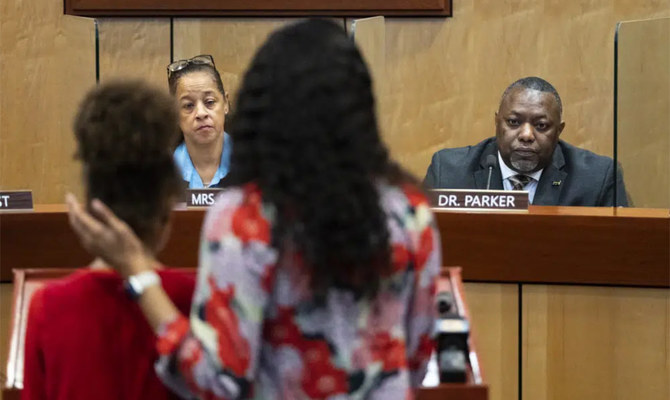
- The anger in Newport News is bubbling up during a decadeslong pendulum swing that’s been moving American schools away from suspensions and expulsions, experts say
US will announce $275 million more in artillery and ammunition for Ukraine, officials say
Russia has sought to take advantage of Ukrainian shortages in manpower and weapons while the war-torn country waits for the arrival of more US assistance
WASHINGTON: The United States is expected to announce an additional $275 million in military aid for Ukraine on Friday as Kyiv struggles to hold off advances by Russian troops in the Kharkiv region, two US officials say.
This will be the fourth installment of military aid for Ukraine since Congress passed a long-delayed foreign aid bill late last month and comes as the Biden administration has pledged to keep weapons flowing regularly and to get them to the front lines as quickly as possible.
The package includes high mobility artillery rocket systems, or HIMARS, as well 155 mm and 105 mm high-demand artillery rounds, according to the two US officials. They spoke on the condition of anonymity to provide details of the aid package before the public announcement.
It follows a monthly gathering Monday of about 50 defense leaders from Europe and elsewhere who meet regularly to coordinate getting more military aid to Ukraine. At this latest meeting, Defense Secretary Lloyd Austin said Ukraine was in a “moment of challenge” due to Russia’s new onslaught on Kharkiv, Ukraine’s second-largest city. He pledged to keep weapons moving “week after week.”
Russia has sought to take advantage of Ukrainian shortages in manpower and weapons while the war-torn country waits for the arrival of more US assistance, which was delayed for months in Congress. Ukrainian forces have been pushed backward in places, while Russia has pounded its power grid and civilian areas.
In the month since President Joe Biden signed the $95 billion foreign aid package, which included about $61 billion for Ukraine, the US has announced and started to send almost $1.7 billion in weapons pulled from Pentagon stockpiles.
It’s also announced $6 billion in funding through the Ukraine Security Assistance Initiative. That pays for longer-term contracts with the defense industry and means that the weapons could take many months or years to arrive.
With this latest package, the US has now provided almost $51 billion in military assistance to Ukraine since Russia invaded in February 2022.
First pilgrims from Philippines depart for Hajj 2024

- About 5,000 Filipino Muslims are set to perform Hajj this year
- Muslims make up 10 percent of majority Catholic Philippine population
MANILA: The National Commission on Muslim Filipinos sent off the first group of Hajj pilgrims on Thursday, marking the beginning of the annual pilgrimage season for Muslims from the predominantly Catholic Philippines.
Muslims constitute about 10 percent of the nearly 120 million Philippine population, with most living on the island of Mindanao and the Sulu archipelago in the country’s south, as well as in the central-western province of Palawan.
With the Hajj this year expected to start on June 14 and end on June 19, many pilgrims depart early to make the most of the spiritual journey that is one of the five pillars of Islam.
The Philippines’ first group of 150 pilgrims left early on Thursday morning from the main airport in Manila, making the first leg of their journey to Madinah via Oman.
“The Hajj is not merely a journey undertaken for personal fulfillment, it is a profound act of devotion symbolizing unity, equality and submission to the will of the Almighty Allah,” NCMF Secretary Sabuddin Abdurahim said during the sendoff ceremony.
NCMF is the body governing Muslim affairs in the Philippines, in charge of organizing the annual Hajj pilgrimage.
“As we bid farewell to our beloved pilgrims embarking on the sacred journey to Saudi Arabia for Hajj, my heart is filled with prayers for your safety, security and the smoothest of journeys,” Abdurahim said.
“I fervently pray that this year’s Hajj is free from any hurdles of challenges, ensuring a profound spiritual experience for each of you.”
About 5,000 Muslims have confirmed their travel to Saudi Arabia for the pilgrimage this year, the NCMF said.
Hapidz Yusop, a pilgrim from Sulu, said that he was fulfilling his dream of doing the sacred pilgrimage.
“It’s been my lifelong dream. I’ve been planning to do the Hajj for a long time, but I don’t have the means, I don’t have the money. But by the mercy of God and the help of our mayor in Talipao, I’m finally here,” he told Arab News, referring to how his arrangements for Hajj were sponsored by the local government in Talipao.
“It feels like we are born again, that we will be cleansed of all of our sins and be born again. May God give us mercy,” Yusop said.
Rahyan Tulawi Amaraja, a 30-year-old nurse from Sulu’s Jolo island, will embark on this year’s Hajj with her parents.
“It has been my aspiration since I was a child to perform my pilgrimage. Fortunately, I will perform my Hajj journey with my parents, which is one of my aspirations, too,” she told Arab News.
“I am overwhelmed with joy,” she said. “For this Hajj journey, I wish to have Allah’s mercy and forgiveness, and to be able to perform it well and successfully.”
Pro-Palestinian protesters leave after Drexel University decides to have police clear encampment
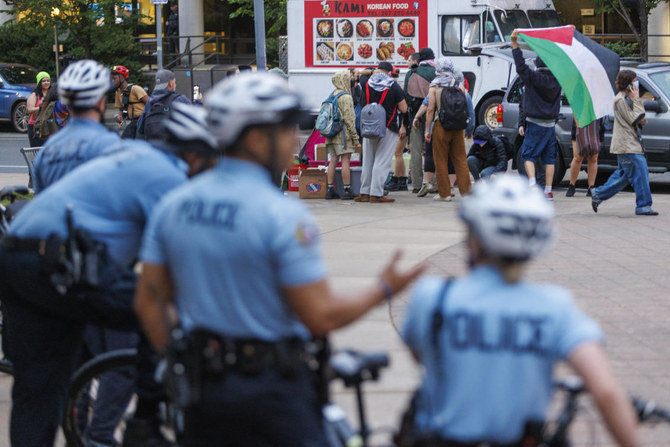
- News outlets reported that police gave protesters a warning to clear the encampment and protesters left
- “An unauthorized encampment that involves large numbers of people unaffiliated with Drexel trespassing on our campus is illegal,” Fry said
PHILADELPHIA: Protesters packed up their belongings and left a pro-Palestinian encampment at Drexel University on Thursday after the school announced a decision to have police clear the encampment.
University President John Fry said in a statement that he decided to have campus police and public safety officers join Philadelphia police in clearing the encampment as peacefully as possible.
News outlets reported that police gave protesters a warning to clear the encampment and protesters left. Protesters didn’t immediately comment.
Fry said the university is committed to protecting the community members’ right to assemble peacefully and express their views, but he has the responsibility and authority to regulate campus gatherings to ensure safety and fulfill the mission to educate students.
“An unauthorized encampment that involves large numbers of people unaffiliated with Drexel trespassing on our campus is illegal,” Fry said. “The language and chants coming from this demonstration, underscored by protesters’ repugnant ‘demands,’ must now come to an end.”
Protesters gathered their belongings as dozens of officers on bicycles arrived around 5:20 a.m., but in less than a half hour only a few items remained on the Korman Family Quad where the 35-tent encampment had been, the Philadelphia Inquirer reported.
“The campers picked up their belongings for the most part and left by their own free will,” Philadelphia Police Sgt. Eric Gripp said.
The encampment had persisted despite Fry’s threat earlier this week to have the encampment cleared. Fry said Tuesday that classes would be held virtually for a third day on Wednesday after administrators tried to open a line of communication to the protesters but were rebuffed. News outlets reported that the university announced Wednesday night that the campus would return to normal operations Thursday.
In his statement early Thursday, Fry said previous requests for protesters to disperse had been ignored, but he was asking Drexel affiliates to leave the encampment so police could “escort any remaining trespassers off our campus.”
A wave of pro-Palestinian tent encampments on campuses has led to over 3,000 arrests nationwide.
On Thursday, the leaders of Northwestern University and Rutgers University are expected to testify at a House Committee on Education and the Workforce hearing about concessions they gave to pro-Palestinian protesters to end demonstrations on their campus. The chancellor of the University of California, Los Angeles, also was scheduled to appear at the latest in a series of hearings looking into how colleges have responded to the protests and allegations of antisemitism.
Bangladeshi architect’s community-centric work builds resilience to climate change
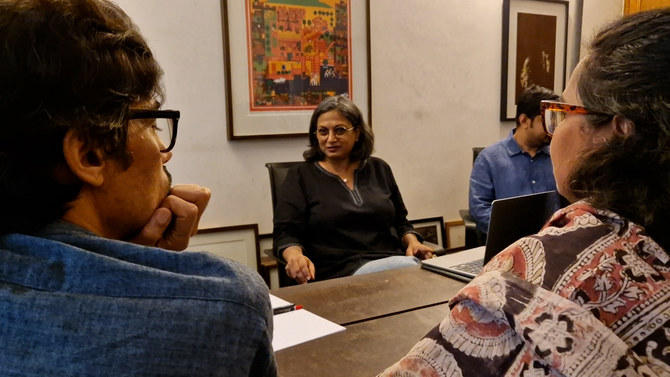
- Marina Tabassum is among Time’s most influential people of 2024
- Her mosque in Dhaka received the 2016 Aga Khan Award for Architecture
DHAKA: With structures that “breathe” and are designed in tune with Bangladesh’s history and environment, Marina Tabassum’s work focuses on the local community and resilience in the country where every year millions of people lose their homes and livelihoods to climate change.
The award-winning founder of Marina Tabassum Architects came to the international spotlight after winning the 2016 Aga Khan Award for Architecture for the Bait Ur Rouf Mosque in Dhaka, which she designed, built and fundraised.
An architect and educator, she is also the recipient of the prestigious 2021 Soane Medal for Architecture, the 2021 Gold Medal by the French Academy of Architecture, the 2021 Arnold W. Bruner Prize from the American Academy of Arts and Letters 2021, and the Lisbon Millennium Lifetime Achievement Award, which she received in 2022.
In 2024, she was featured on Time Magazine’s 100 Most Influential People list for developing a “practice and a way of being that prioritizes local cultures and values, as well as the perils faced by our shared planet.”
One of the drivers of Tabassum’s work is a sense of responsibility.
“There is enormous disparity in our human condition in Bangladesh and I feel like it’s not just my responsibility, (but) it’s for everybody to take that, their own share of the responsibility, and to do something about it,” she told Arab News at her practice in Dhaka.
“And I am of a breed who has the knowledge, has the capacity, all the different things that are required to take the responsibility to reduce these differences.”
Throughout her nearly three-decade career, she has designed some of Bangladesh’s most famous structures, which, besides the Bait Ur Rouf Mosque, are the Museum of Independence in Dhaka — a project with Kashef Chowdhury — as well as housing adapted to the environment, including a modular mobile house for climate victims in the country’s south and north.
The Bait Ur Rouf Mosque, which is personally very close to Tabassum, was built on land donated by her grandmother and with a modest budget raised through community contributions.
“I was not just designing it, but also constructing it, fundraising it, so that became a very intensely involved project. I would say it is an important milestone for me and also it gave me a lot of international acclaim, which definitely helps in many ways,” she said.
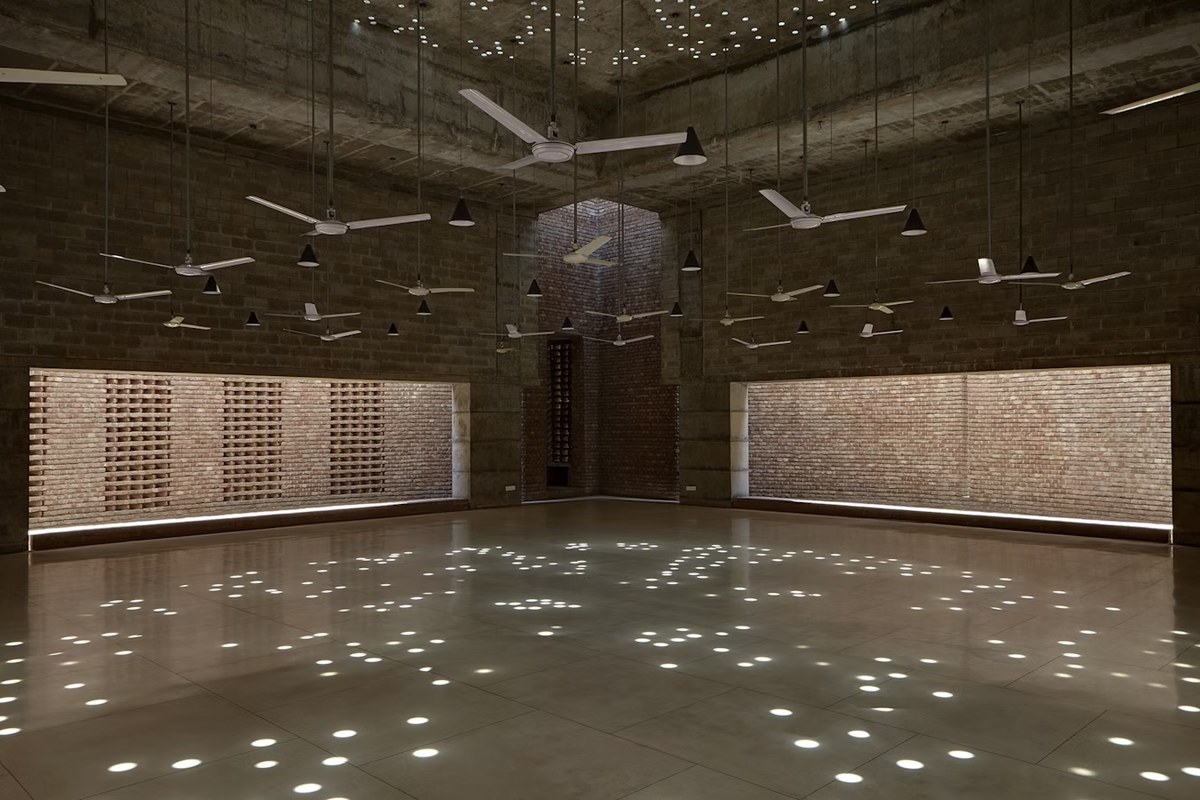
The building’s porous brick walls keep it ventilated and cool while natural light enters it through a skylight. For Tabassum, one of the most important features in her work is that it “has to be able to breathe without artificial aids,” especially in her own subtropical country.
“It’s important for us to have our buildings as open as possible so that we can have natural ventilation, air can come and pass through the buildings. That’s what I call the breathing of a building,” she said.
“That’s an absolutely crucially important phenomenon that we should integrate in our architecture.”
Another crucial factor is having her architecture rooted, as much as possible, in the local context, including by sourcing material locally and working with local craftsmen.
Working with local communities and “trying to make ourselves available to their service,” is the main focus of her projects now — inspired also by her parents and teachers.
“Till date, my father, who is 87 years of age, is still working as a doctor, giving treatment to people who cannot afford cancer therapy. I think that’s embedded in us, to some extent, to have that value of giving,” she said.
As an architect, she has been inspired by many different people — her professors at Bangladesh University of Engineering and Technology and Muzharul Islam, an architect and urban planner who is considered the grand master of modernism in South Asia.
“There’s a lot that I learned from him,” Tabassum said. “He always talked about how we have a small country and a huge population, how the entire country needs to be planned in a proper manner in terms of land use, in terms of housing, food production, and all the other things that a country requires, and every single space should be properly planned and designed — which we are still yet to do.”
In 2020, she established a new non-profit branch of her practice — the Foundation for Architecture Community Equity — dedicated to providing a home and humane living environment to Bangladesh’s low-income, landless, or climate-affected communities.
One of its flagship initiatives is Khudi Bari, which translates to “little house” in Bengali. Under the project, over 50 such bamboo-frame houses have already been built for the coastal communities where seawater regularly claims the land, and for flood-prone communities in the north, where swelling rivers cause catastrophic flooding during the monsoon season.

The cheap and light houses are made from materials that are widely available in the regions and are designed to be easily dismantled and moved when needed.
“Architecture is not a product, architecture has expanded and has always had that expanded idea of creating a proper environment, a good environment. And in order to create a good environment, you cannot just focus on a building, but you have to create, starting from planning to landscape to building (according) to people’s living conditions, economics,” Tabassum said.
“It’s about changing the mindset in many ways … The changes I would like to see (are) more about rootedness, more about sourcing locally, building responsibly, including people.”
Sunak and Starmer hit UK campaign trail after shock election call
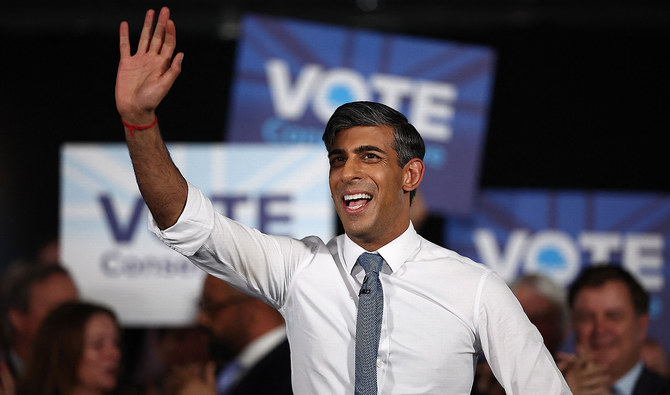
- Sunak’s Conservatives have trailed Labour by around 20 percentage points in opinion polls since he became PM in Oct. 2022
- Sunak has shocked and angered many in his party when he gambled by calling a July 4 election, months earlier than expected
LONDON: British Prime Minister Rishi Sunak and his Labour Party rival Keir Starmer kicked off their election campaigns on Thursday, each arguing that only they can snap the country out of its economic and political malaise.
Sunak, whose Conservatives have trailed Labour by around 20 percentage points in opinion polls since he became prime minister in October 2022, shocked and angered many in his party when he gambled by calling a July 4 election, months earlier than expected.
He argued on Thursday that the economy was turning a corner and he had a plan to tackle illegal immigration. But with prices in the shops up 21 percent in the last three years and the national health service buckling under record waiting times, it may be hard to persuade voters that Britain is on the right track.
“Even though there’s more work to do and I know it will take time for you to see the benefits, the plan is working,” Sunak told voters at an event with workers in central England.
The former investment banker announced his decision in the pouring rain in Downing Street on Wednesday, having to shout over protesters blaring the song “Things Can Only Get Better” — an anthem associated with Labour’s crushing 1997 election victory under Tony Blair that ended the last long period of Conservative rule.
Sunak also admitted on Thursday that the first flights sending illegal migrants to Rwanda, a flagship policy that is tangled in legal challenges, would not start before the vote.
He did receive one boost, however, when Nigel Farage, a former Brexit campaigner, said he would not seek election for Reform, likely blunting the appeal of the right-wing party and reducing its ability eat into the Conservatives voter base.
At stake is control of the world’s sixth largest economy which has endured years of low growth and high inflation, is still battling to make a success of its 2016 decision to leave the European Union, and is slowly recovering from twin shocks of COVID-19 and an energy price spike caused by the war in Ukraine.
That backdrop makes the economy one of the most important electoral battlegrounds. The two parties are also likely to focus on migration, defense, health and security.
POLITICAL TURMOIL
Polls show voters want change, even if they are not hugely enthused by Starmer and his Labour Party, after 14 years of Conservative government marked by unprecedented levels of political turmoil and so-called culture war issues.
Coffee shop worker Kitty McMurray, on her way to work, said the country needed an election because it felt like everything was falling apart. “Bring it on,” the 29-year-old said.
Starmer told voters at an event in Gillingham, southeast England, that he wanted to renew, rebuild and reinvigorate Britain. He focused on deprivation and the invisible barriers that prevent many from improving their lot.
Referencing children who live in inner-city areas where big corporations such as Google have a presence, he said: “they cannot imagine themselves ever making that journey from their school to those jobs. It’s a few hundred yards.”
Starmer is the country’s former chief prosecutor who has pulled Labour’s politics back to the center ground after it lurched to the left under his predecessor.
Were Labour to win, Starmer would become Britain’s sixth prime minister in eight years, the highest turnover since the 1830s, underscoring the level of turmoil that has gripped a country once known for its political stability and pragmatism.
While the electioneering gets underway, activity in parliament is expected to pick up too as the government works out which of the pieces of legislation currently in process will be rushed through, and which will fall by the wayside.
Laws currently under discussion include Sunak’s plan to impose some of the world’s strictest anti-smoking rules by banning anyone aged 15 and under from ever buying cigarettes.
With Sunak calling the election earlier than the October or November that most had expected, all parties were also racing to line up enough candidates to contest every seat.



